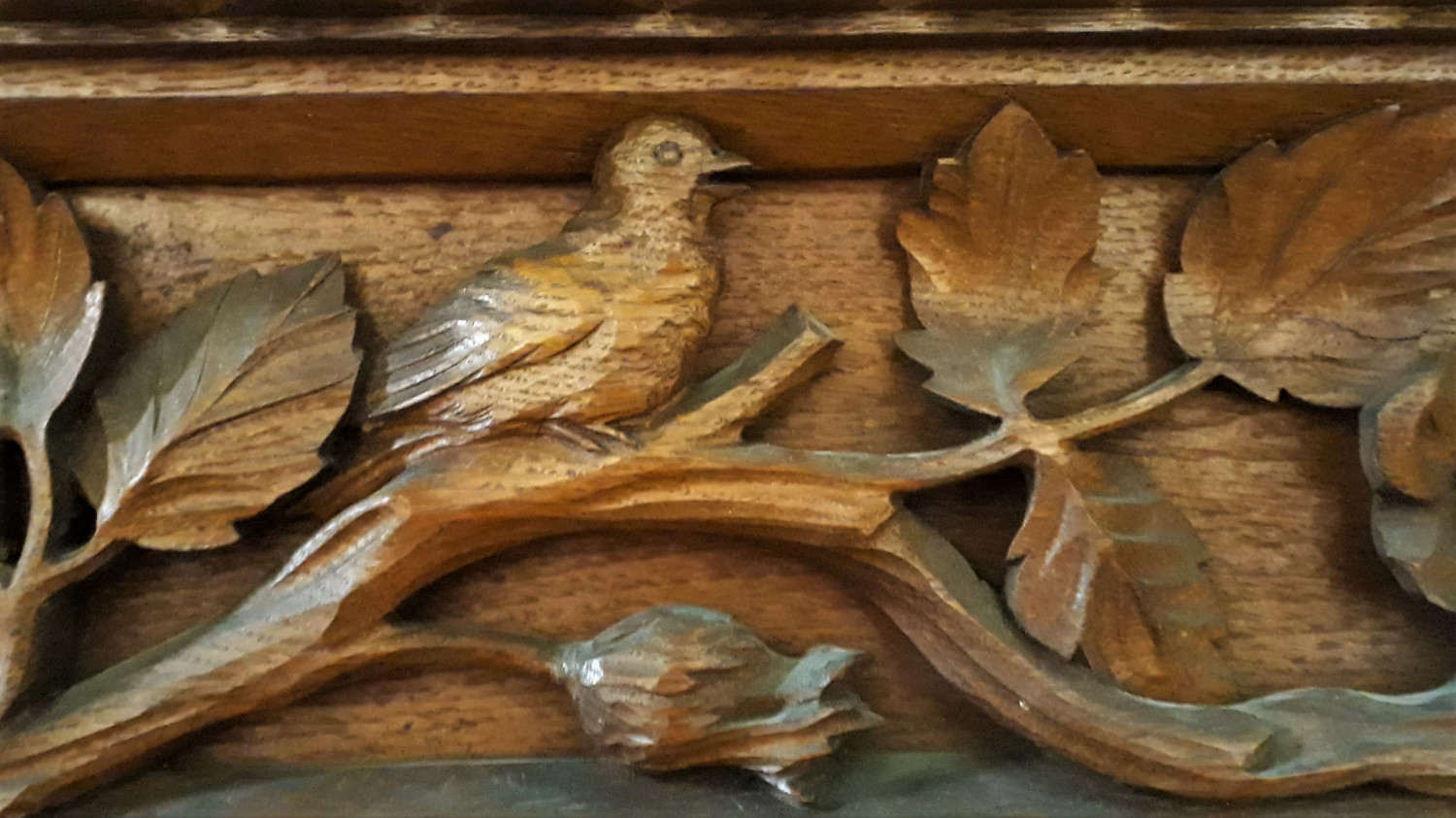 At the time of the Great Survey in 1086, William the Conqueror bestowed upon Eudo, the son of Spiruwin, the Barony of Tateshale in Lincolnshire (now known as Tattershall). William also gave him the lands of Hillington, Grimston, Congham and Little Massingham that had belonged to Scula. Scula is thought to have been a general who served under Viking King Ragnald.
At the time of the Great Survey in 1086, William the Conqueror bestowed upon Eudo, the son of Spiruwin, the Barony of Tateshale in Lincolnshire (now known as Tattershall). William also gave him the lands of Hillington, Grimston, Congham and Little Massingham that had belonged to Scula. Scula is thought to have been a general who served under Viking King Ragnald.
In 1302, these lands passed into the possession of Sir John de Thorpe, by right of his wife, Alice.
St. Andrew's Church, Little Massingham, Robert Ladbrooke 1800's.
Later the estate of Little Massingham came into the family of the Le Stranges of Hunstanton, and in the 16th century, they passed to the Mordaunt family when Robert Mordaunt married Barbara le Strange. In 1807 Sir Charles Mordaunt, the eighth baronet decided to sell the estate of Little Massingham and the advowson of the living to Joseph Wilson, Esq., of Highbury Hill, Middlesex. Mr Wilson was a rich and prosperous silk merchant from London and although having purchased Little Massingham he never lived there, but chose to use Stowlangtoft Hall Suffolk as his country estate. However, he did install his son-in-law Charles D. Brereton as rector of Little Massingham.



The legend of Lord Brereton and the bear is that William Brereton killed his valet in a temper after he was interrupted at his meal. His punishment was to be a fight with a bear, but the King gave him three days to make a muzzle to contain the bear. After three days the bear was let loose on the lord, and luckily for him, the muzzle proved to be successful. The muzzled bear became the Crest on the Brereton Coat of Arms.​
The principle entrance is by the south porch, which appears to rest on the foundation of some still earlier building. On each side of this entrance there are niches which once held the statues of the Virgin and St. Andrew, while above it are two lichen-covered stone escuteons, bearing the arms of the de Thorpes. The porch is lighted by small perpendicular windows, and around the bottom of the roof runs the inscription (Jesus's words to the woman of Samaria. John 4 v23), carved in oak:
"The hour cometh and now the true worshippers shall worship the Father in spirit and in truth."
The pews were replaced in 1857 and the poppy heads have carvings of blackberries, hops, ivy, passion flowers, acorns, hips, haws and wheat. At the same time the roof was repaired and re-leaded, the floor tiled, the font (which formally stood behind the south door) removed to its present situation. Other improvements were made, under the supervision of Mr Jeckel, an architect of Norwich. He designed the very handsome pulpit, composed of Caen stone and marble, that carries a Victorian version of a "green man".
and wheat. At the same time the roof was repaired and re-leaded, the floor tiled, the font (which formally stood behind the south door) removed to its present situation. Other improvements were made, under the supervision of Mr Jeckel, an architect of Norwich. He designed the very handsome pulpit, composed of Caen stone and marble, that carries a Victorian version of a "green man".

The sanctuary has wood panelling around the walls and there is a heavily carved reredos from 1891 behind the altar. This has three panels showing a poppy and corn (wheat and barley), a central cross, and a vine with unches of grapes - signifying the bread and wine from the eucarist.
Do note too, the fine carving of birds on the south choir stalls.
The early Parish Registers were on parchment and date from the reign of Queen Elizabeth I. All the entries, up to the year 1599 were copied from earlier records, in accordance with a canon published in the reign of Elizabeth. The last chapter of Massingham Parva shows the date of 1559 for the first marriage. First burials are recorded as from 1715 and Christenings from 1754.
The Church does have a peal of 3 bells :
Sadly the bells are no longer rung. These disused bell towers all have a story to tell and it is suspected that it could be a tower structural issue - as the metal bell frame is fixed to the tower walls, which mean that the walls would bear all the stress from the swinging of the bells as they ring "full circle".
The oldest bell has the inscription " +Hec Fit Stor CampanaLaude Bonor."
| Bell | Weight | Nominal | Note | Diameter | Dated | Founder | Canons | Turning |
| 1 | 4½cwt | 28.75" | c1499† | Brasyers of Norwich (generic) | Y | |||
| 2 | 5cwt | 30.00" | 1609 | John Draper, Thetford | ||||
| 3 | 6cwt | 33.50" | 1599† | John Draper, Thetford | Y |
Thanks to Chris Richmond for the photographs.
 |
 |
 |
